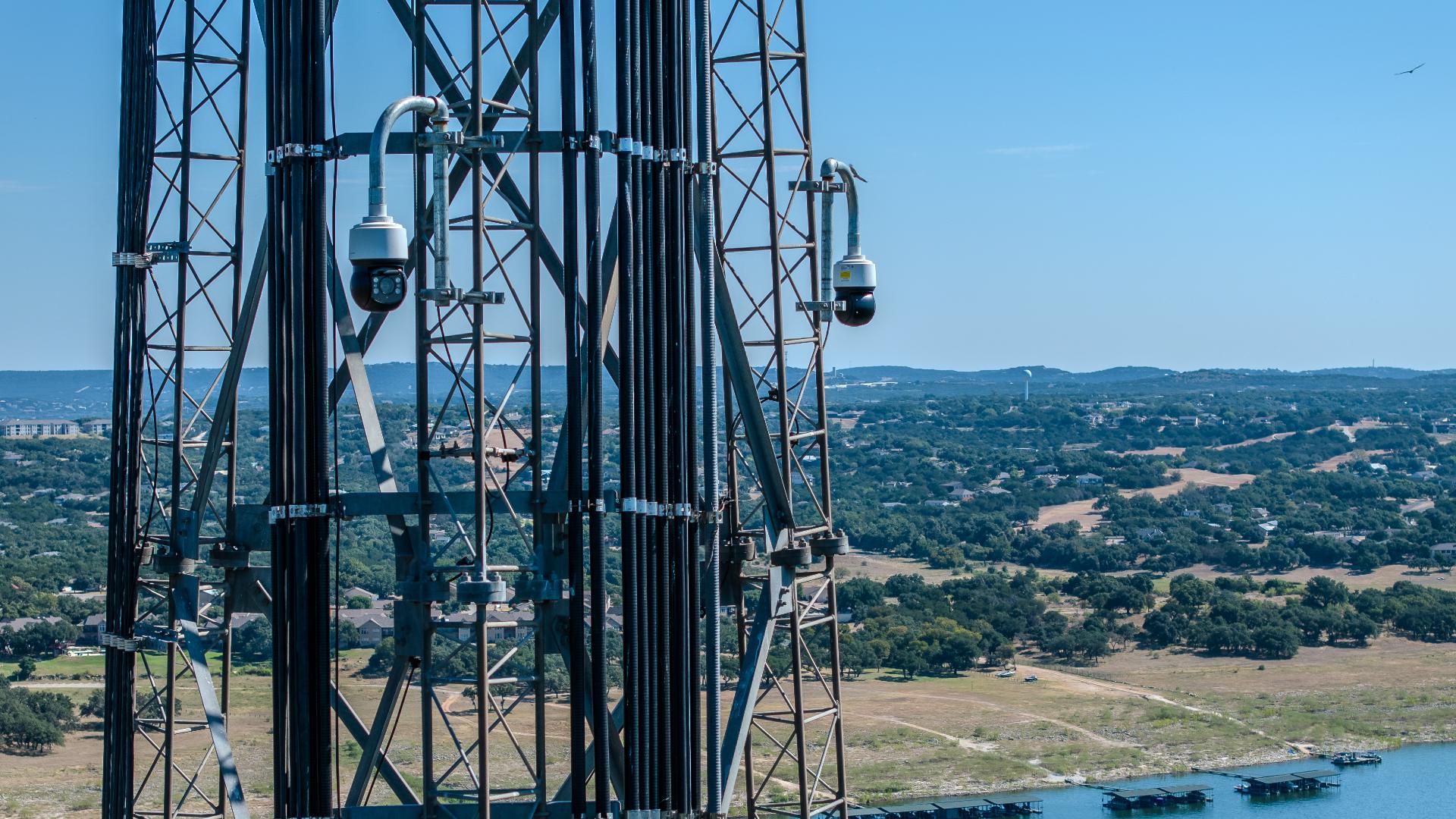AUSTIN, Texas — As Texas temperatures continue to soar, so does the risk of wildfires.
Austin was recently ranked the fifth-highest U.S. metro at risk for wildfire damage, according to a group called CoreLogic.
To help prevent that damage, Austin Energy has officially deployed an artificial intelligence (AI) system to better detect wildfires.
The system, called Pano AI, will monitor 437 square miles of Austin, the majority of Travis County and some of Hays, Williamson, Bastrop and Burnet counties.
Twenty-six cameras will use a combination of 360-degree technology and AI to detect smoke and determine where a fire is happening. The system will then send that information to first responders in real-time.
"This is an important step for the safety of our community and the reliability of our electric system," said Chris Vetromile, Austin Energy's wildfire program manager. "With climate change driving hotter, drier summers, this AI-powered detection system allows us to respond faster and more effectively to wildfires, safeguarding our community and supporting more reliable service."
Justice Jones is the Wildfire Mitigation Officer with the Austin Fire Department. He said this will bring quicker response times from firefighters and make the job safer.
"It also adds an element of firefighter safety because not only can we see the fire in the field, we can see what the fire is doing," Jones said.
Each camera can cover a 10-mile radius, with a 30-times optical zoom.
Marisa Lipscher lives in the Northwest Austin. She's seen two wildfires, including one back in 2022 that did damage to a home. She said she's grateful for the new technology and the peace of mind it brings.
"I feel a tremendous relief,” Lipscher said.
The implementation of the new technology was made possible by Austin Energy, the Austin Fire Department and the Texas Public Power Corridor Committee.
What is Pano AI?
Used in 15 areas across 20 million acres in the United States, Australia and British Columbia, Canada, Pano AI works to detect, find and share information about wildfires with professionals.
The device uses "ultra-high-definition cameras, geo satellite data, field sensors, legacy cameras, emergency alerts, and other data feeds" to spot fires within 15 miles and send details to first responders.

